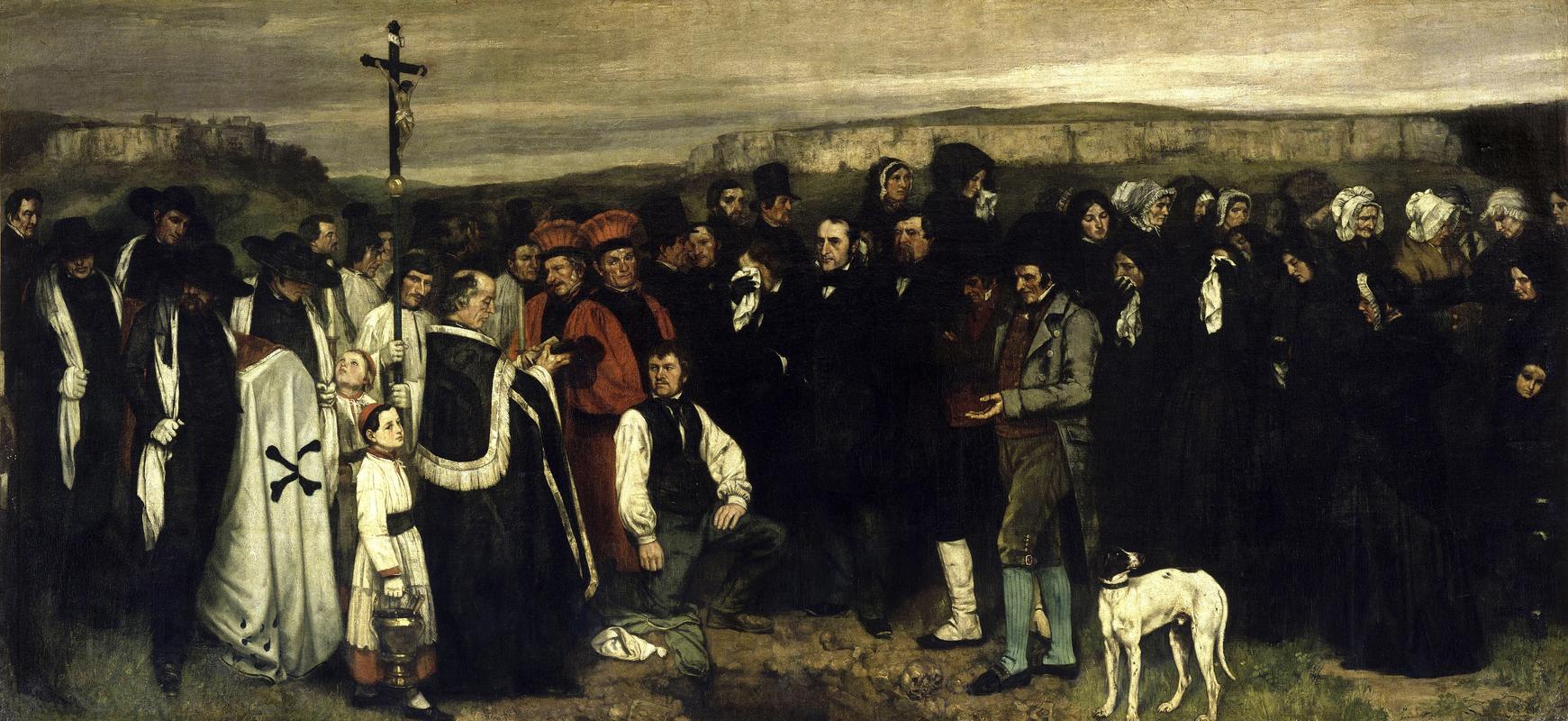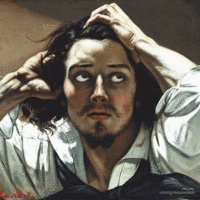More about A Burial at Ornans
- All
- Info
- Shop

Contributor
Courbet was all about painting what was there. But his early version of the #nofilter movement just wouldn't catch on.
If people were paying for art to be made up to the early 19th century, especially of themselves, they would usually want the works. Artists were like photo retouchers, removing any unsightly moles, crows feet, weird-looking belly buttons, etcetera - most of the time, anyhow. [I'm looking at you, Piero della Francesca! What's with that nose?]
Not so with Courbet. In A Burial at Ornans, not only did he paint ordinary, ugly people - according to some haters at the 1851 Salon - he did it on a canvas bigger than your average 4-door sedan at whopping 10.4-feet by 21.9-feet! This rightfully pissed off the art snobs of the time who thought paintings this large should be reserved for religious or historical subjects, not ordinary burials. Harsh words for a guy who just wanted to paint his grandfather's burial in their family's hometown. Nah, I'm sure you guys didn't hurt his feelings at all.
So what happened to this ugly behemoth of a painting and where is it now? In the 1870s, the French Government threw Courbet in jail for his association with the Paris Commune, a failed revolutionary movement. Afterwards, Courbet died following several years of self-imposed exile in Switzerland - which he preferred over having to pay fines to the French Government. His sister donated A Burial at Ornans to the French Ministry of Fine Arts after his death. Today it hangs in Paris’ Musée d'Orsay alongside other 19th century French paintings. Not a bad outcome for a frequently misunderstood guy who once painted a picture of female genitalia for an enthusiastic Turkish collector. But that's a story for another day.
Sources
- “Gustave Courbet A Burial at Ornans.” Musee-Orsay. Accessed March 15, 2018. http://www.musee-orsay.fr/index.php?id=851&L=1&tx_commentaire_pi1[showU…
- Jordan,Courtney. “Can You Name the First Realist? Hint: His Name Rhymes with Sorbet.” Artists Network. February 16, 2018. Accessed March 15, 2018. https://www.artistsnetwork.com/art-history/oil-painting-gustave-courbet…
- “Visual Arts: Gustave Courbet's A Burial at Ornans 1851” PBS. Accessed March 15, 2018. http://www.pbs.org/wgbh/cultureshock/flashpoints/visualarts/courbet_a.h…
Featured Content
Here is what Wikipedia says about A Burial at Ornans
A Burial at Ornans (French: Un enterrement à Ornans, also known as A Funeral at Ornans) is a painting of 1849–50 by Gustave Courbet. It is widely regarded as a major turning point in 19th-century French art. The painting records a funeral in Courbet's birthplace, the small town of Ornans. It treats an ordinary, provincial funeral with frank realism, and on the grand scale traditionally reserved for the heroic or religious scenes of history painting. Its exhibition at the 1850–51 Paris Salon created an "explosive reaction" and brought Courbet instant fame. It is currently displayed at the Musée d'Orsay in Paris, France
Check out the full Wikipedia article about A Burial at Ornans















